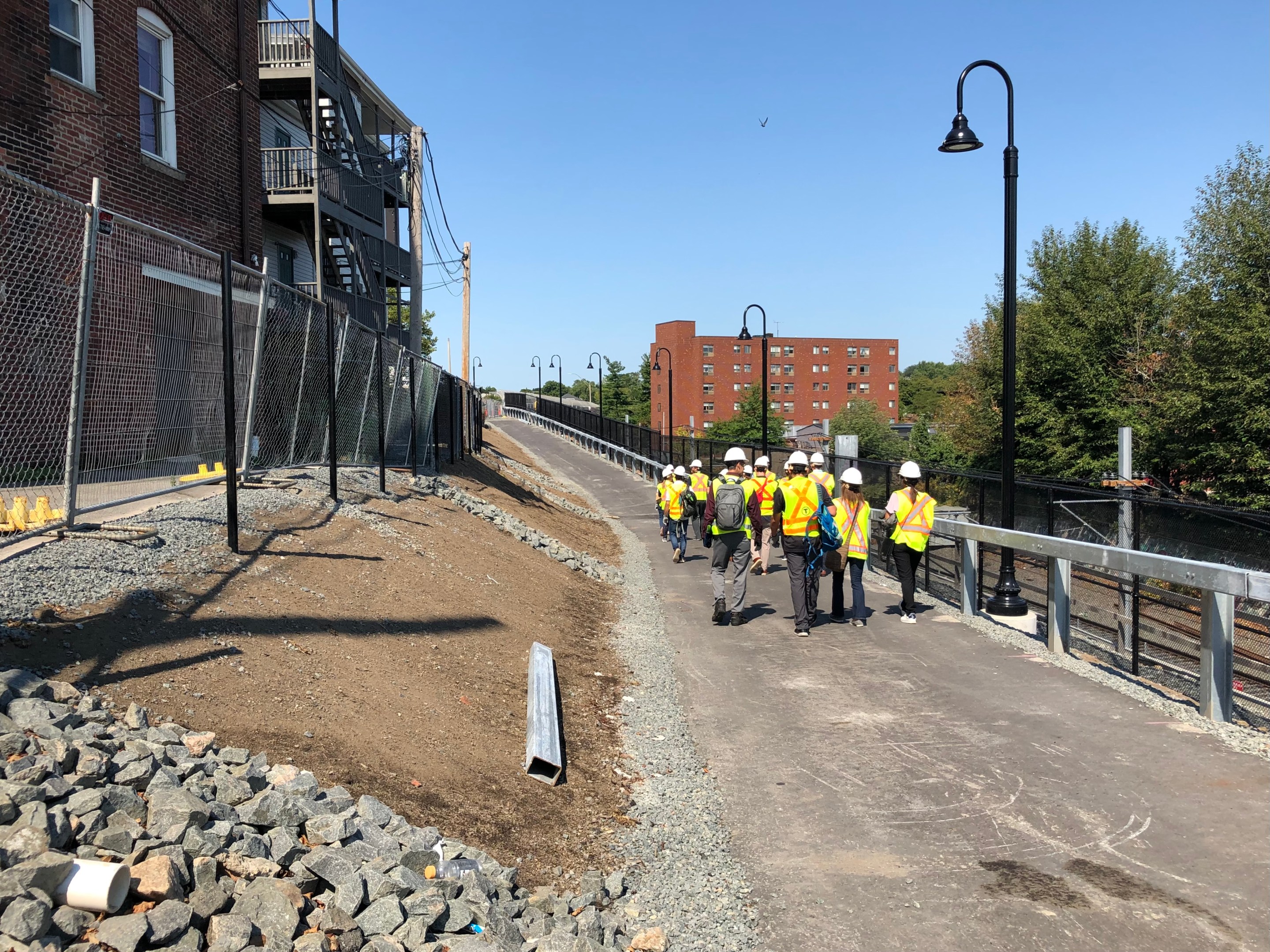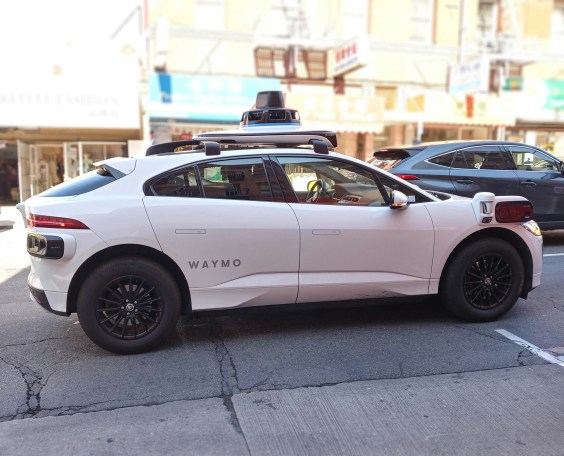During last week’s NACTO conference in Boston, attendees streamed out of the Hynes Convention Center each morning for “walkshops” that offered tours of some of the region’s pedestrian, bike, and transit infrastructure.
One of those walkshops offered a hard-hat construction tour of the Somerville Community Path Extension, which is nearing the end of its construction by the contractors in charge of the Green Line Extension project. Because the Community Path will offer a primary point of access to several stations along the Green Line’s new Medford branch, the path is expected to be open when the new light rail line opens to passengers later this year.
Our tour covered about 0.6 miles on the new path, from the Brickbottom neighborhood, just east of the future East Somerville Green Line station, to Medford Street, behind the new Somerville High School. But the full project will be a little over two miles long, and extend from the current terminus of the Community Path at Lowell Street to the Lechmere station across the city line in Cambridge:
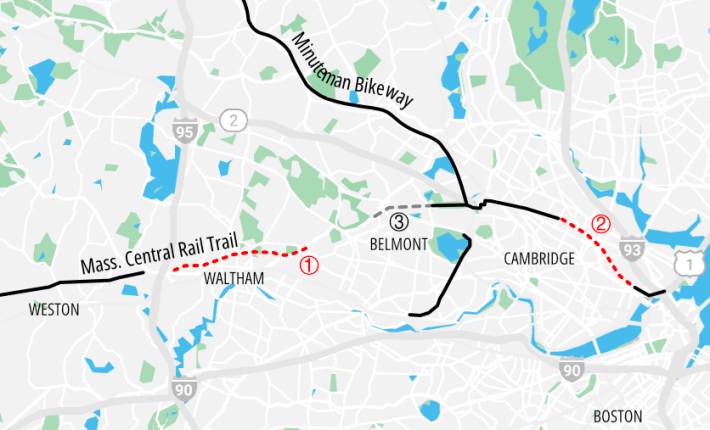
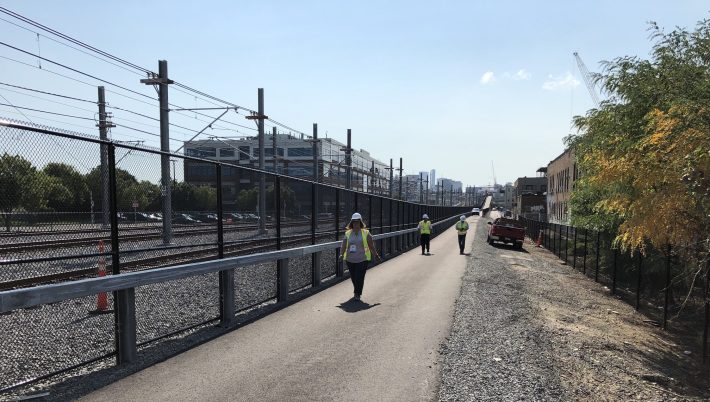
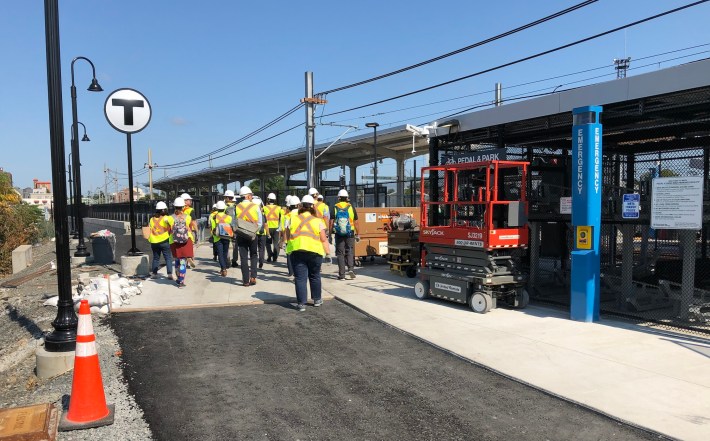
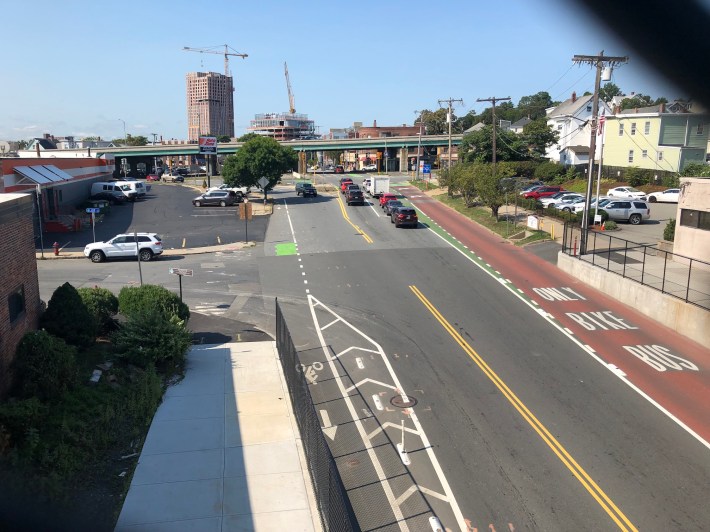
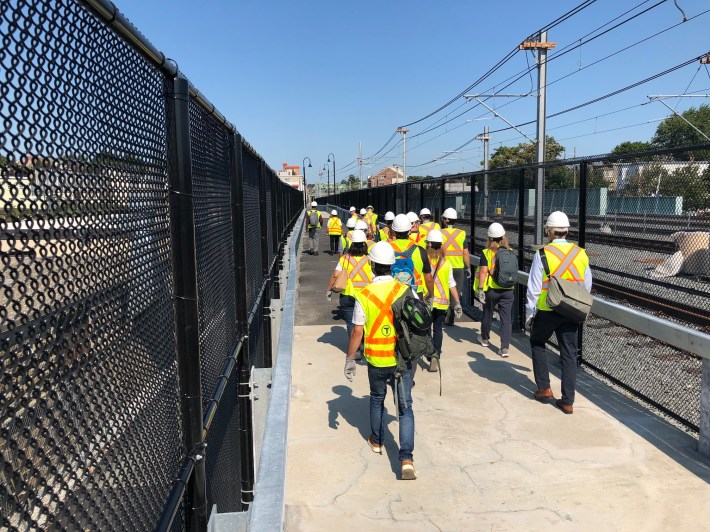
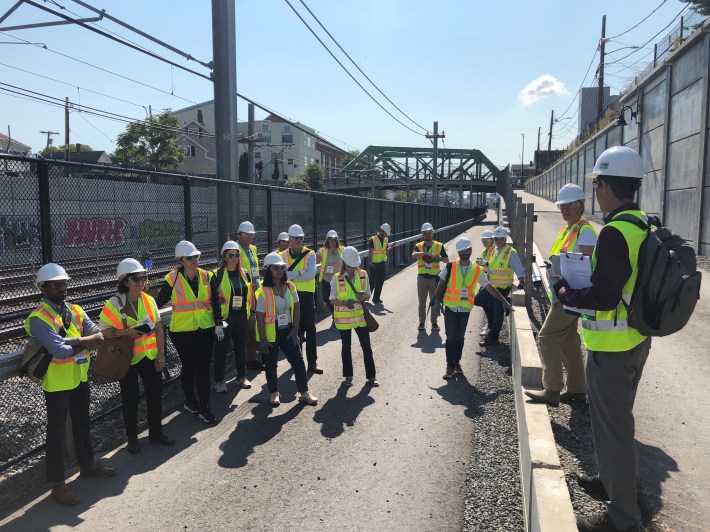
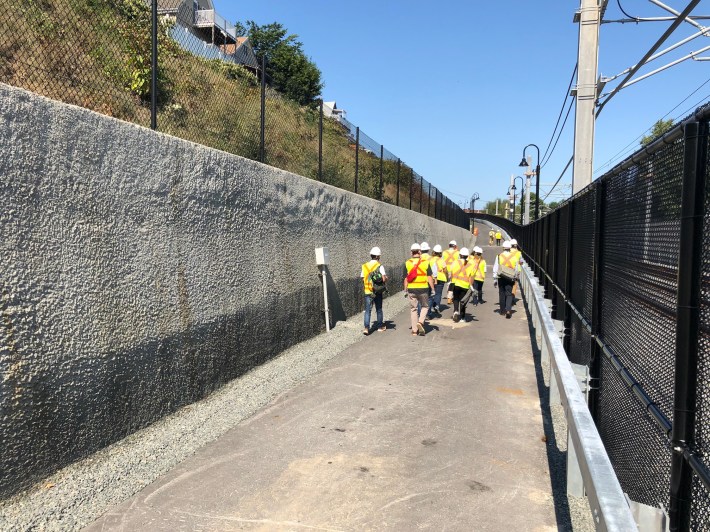

One of the walk’s guides was Karen Molloy, a leading figure in the Somerville Transportation Equity Partnership (STEP) who has been advocating for the Community Path Extension to be included as part of the Green Line Extension project for over a decade.
In 2015 and 2016, when Green Line Extension costs were spiraling out of control, the Community Path Extension was on the chopping block, but Molloy, local officials, and hundreds of other advocates lobbied to keep it in the scope of the project.
Last week’s tour was Molloy’s first time walking on the new path, and she said that it was an emotional experience to finally see the results of her advocacy firsthand.
“So many people worked so hard to make this happen,” said Molloy.
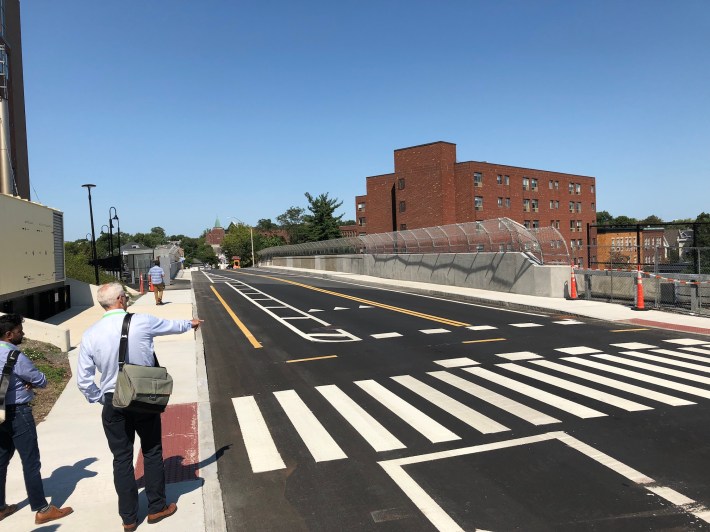
However, the cost-cutting process did leave behind a few wished-for amenities.
For instance, there will not be consistent sources of lighting along the path when in opens (you’ll see some street lamps along the path in some of the photos above, but not in others).
Viola Augustin, the City of Somerville’s liason to the Green Line Extension project, says that the city was able to negotiate the installation of electrical conduit along the entire path, and she is hopeful that the city will be able to install additional lighting after the Green Line project is officially complete.
The other striking feature of the Community Path in its current form is the lack of any shade or greenery – a marked contrast to the existing Community Path west of Lowell Street.
Last week’s tour happened during a mild morning with temperatures around 70 degrees, but without any relief from the sun, it felt much warmer.
Project managers said that the MBTA is reluctant to allow trees anywhere near its tracks, where falling branches can wreak havoc with the overhead catenary wires that will deliver power to Green Line trains. But Augustin is hopeful that the T will allow smaller trees to be planted in locations where the risk of that happening would be low.
Somerville city officials are currently negotiating those details and many others in a long-term maintenance agreement for the new path with the MBTA, which will continue to own the land that the path is on after construction is completed.
